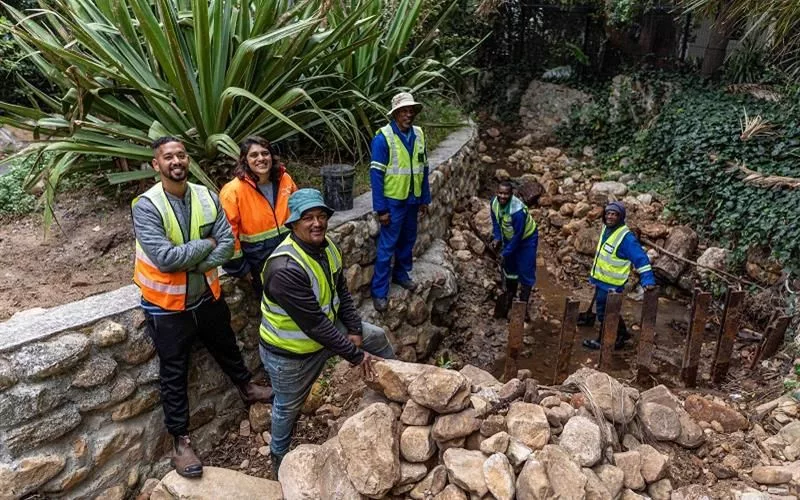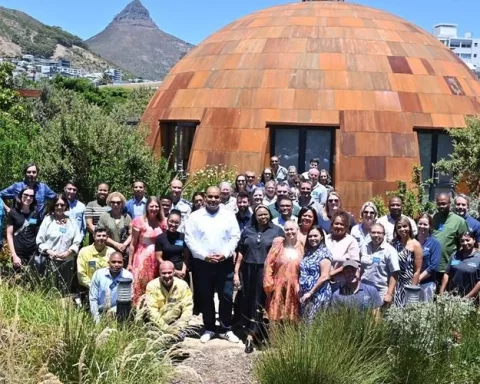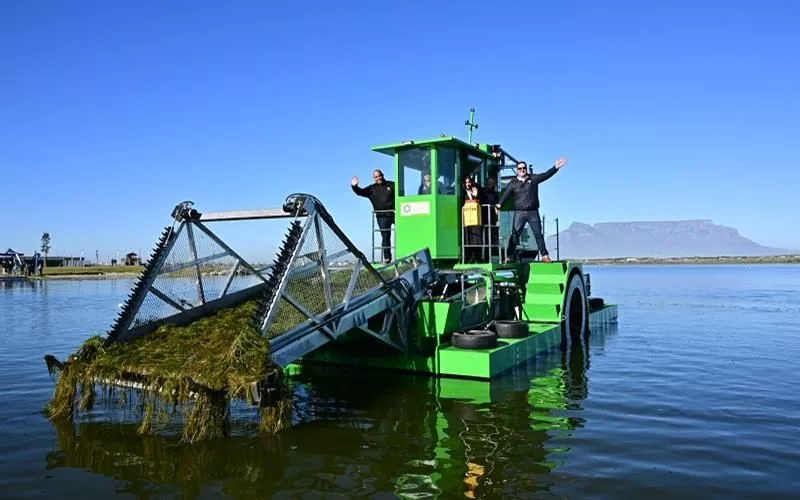Cape Town’s Catchment, Stormwater, and River Management department is leading a large-scale project to rejuvenate the Blinkwater Stream in Camps Bay. The project aims to repair the concrete-lined channel, construct two silt basins upstream to trap large boulders, and equip the city to better resist future weather adversities. The innovative project, which integrates several detailed strategies, reflects the city’s commitment to sustainability and proactive infrastructure maintenance.
What is the Blinkwater Stream rehabilitation project in Cape Town?
The Blinkwater Stream rehabilitation project in Cape Town is a large-scale initiative by the City’s Catchment, Stormwater, and River Management (CSRM) department to rejuvenate the Blinkwater Stream in Camps Bay. The project aims to repair the concrete-lined channel, construct two silt basins upstream to trap large boulders, and equip the city to better resist future weather adversities. The city has allocated a commendable R747,632.40 to breathe life into this ambitious project.
Pioneering an Artisanal Endeavor
In Cape Town’s radiant center, a large-scale, hands-on project is underway, exemplifying the city’s dedication to the conservation of natural assets and the protection of its inhabitants. The City’s Catchment, Stormwater, and River Management (CSRM) department is hard at work, operating under the Water and Sanitation Directorate, to rejuvenate the Blinkwater Stream in Camps Bay.
The Blinkwater Stream, with a history as ancient as the Table Mountain itself, courses from the lush Little Glen Nature Reserve on Geneva Drive to the Theater of the Bay on Link Street. The stream, birthed by multiple tributaries on the mountain, unites at Hely Hutchinson Avenue before cascading into a single route that winds its way to Camps Bay Beach, a mere stroll away from the Tidal pool.
With a length of roughly 1.46 km, the stream reveals a fascinating demeanor during the winter months. The tributaries from Table Mountain feed the Blinkwater Stream and swell during winter, leading to a striking increase in flow rate – a spectacle that has marked the shift of seasons for countless years.
Addressing the Challenges of Aging Infrastructure
Over time, the old concrete infrastructure has suffered under high water flow rates during winters, which called for the CSRM team’s prompt action. Their vision is for the Blinkwater Stream to smoothly handle the intended flow rates, thereby strengthening the system’s sustainability for future generations. The project also offers the added benefit of ensuring the safety of residents residing near the stream.
The city has allocated a commendable R747,632.40 to breathe life into this ambitious project. This initiative, which took off in March 2024, came as a swift reaction to the havoc caused by heavy rains in September 2023. This downpour damaged the nearby homes and downstream structures, notably the concrete-lined channel of Blinkwater. Adding to the city’s troubles, a sinkhole appeared on Link Street adjacent to the Theatre on the Bay, caused by large rock boulders dislodged from the river’s upstream section.
The ongoing rehabilitation project aims to tackle these issues and equip the city to better resist future weather adversities. The project plan comprises repairing the concrete-lined channel and constructing two silt basins upstream to trap large boulders and prevent further damage.
Innovative Approaches and Future Plans
The project blueprint integrates several detailed strategies. These involve installing 200mm UPVC pipes for efficient stormwater diversion, relining the concrete channel to halt water leakage, and building silt basins to catch upstream boulders. The ingenious implementation of ‘dragon teeth,’ designed to trap boulders and debris without obstructing the river’s flow rate, reflects the innovative thinking incorporated into the project. Further prevention measures include the relocation of sewer and electrical services.
These efforts aim to bolster the stream’s stormwater infrastructure, thus minimizing the impact of potential flood events. The city eagerly anticipates the completion of this transformative project by the end of May.
Councillor Zahid Badroodien, the Mayoral Committee Member for Water and Sanitation, effectively encapsulates the project’s essence. He remarks, ‘This is one of the several projects of this nature currently underway across the City…,’ highlighting the project’s crucial role in the city’s comprehensive winter readiness plan.
Taking a Stand for a Sustainable Future
As Cape Town tirelessly progresses on the Blinkwater Stream’s rehabilitation in Camps Bay, the city is demonstrating its commitment to working with nature while ensuring the safety of its citizens. The city stands as a shining example of proactive infrastructure maintenance, serving as a guiding light for other cities worldwide.
1. What is the Blinkwater Stream rehabilitation project in Cape Town?
The Blinkwater Stream rehabilitation project is a large-scale initiative by the City’s Catchment, Stormwater, and River Management department to rejuvenate the Blinkwater Stream in Camps Bay.
2. What are the goals of the project?
The project aims to repair the concrete-lined channel, construct two silt basins upstream to trap large boulders, and equip the city to better resist future weather adversities.
3. Why is the city investing in this project?
The city has allocated a commendable R747,632.40 to breathe life into this ambitious project. This initiative came as a swift reaction to the havoc caused by heavy rains in September 2023 that damaged nearby homes and downstream structures, notably the concrete-lined channel of Blinkwater.
4. What innovative approaches are being used in the project?
The project blueprint integrates several detailed strategies, including installing 200mm UPVC pipes for efficient stormwater diversion, relining the concrete channel to halt water leakage, and building silt basins to catch upstream boulders. The project also uses ‘dragon teeth,’ designed to trap boulders and debris without obstructing the river’s flow rate.
5. What is the timeline for the project?
The city eagerly anticipates the completion of this transformative project by the end of May.
6. What does the project say about Cape Town’s commitment to sustainability?
The project exemplifies the city’s dedication to the conservation of natural assets and the protection of its inhabitants. It also stands as a shining example of proactive infrastructure maintenance and serves as a guiding light for other cities worldwide.











